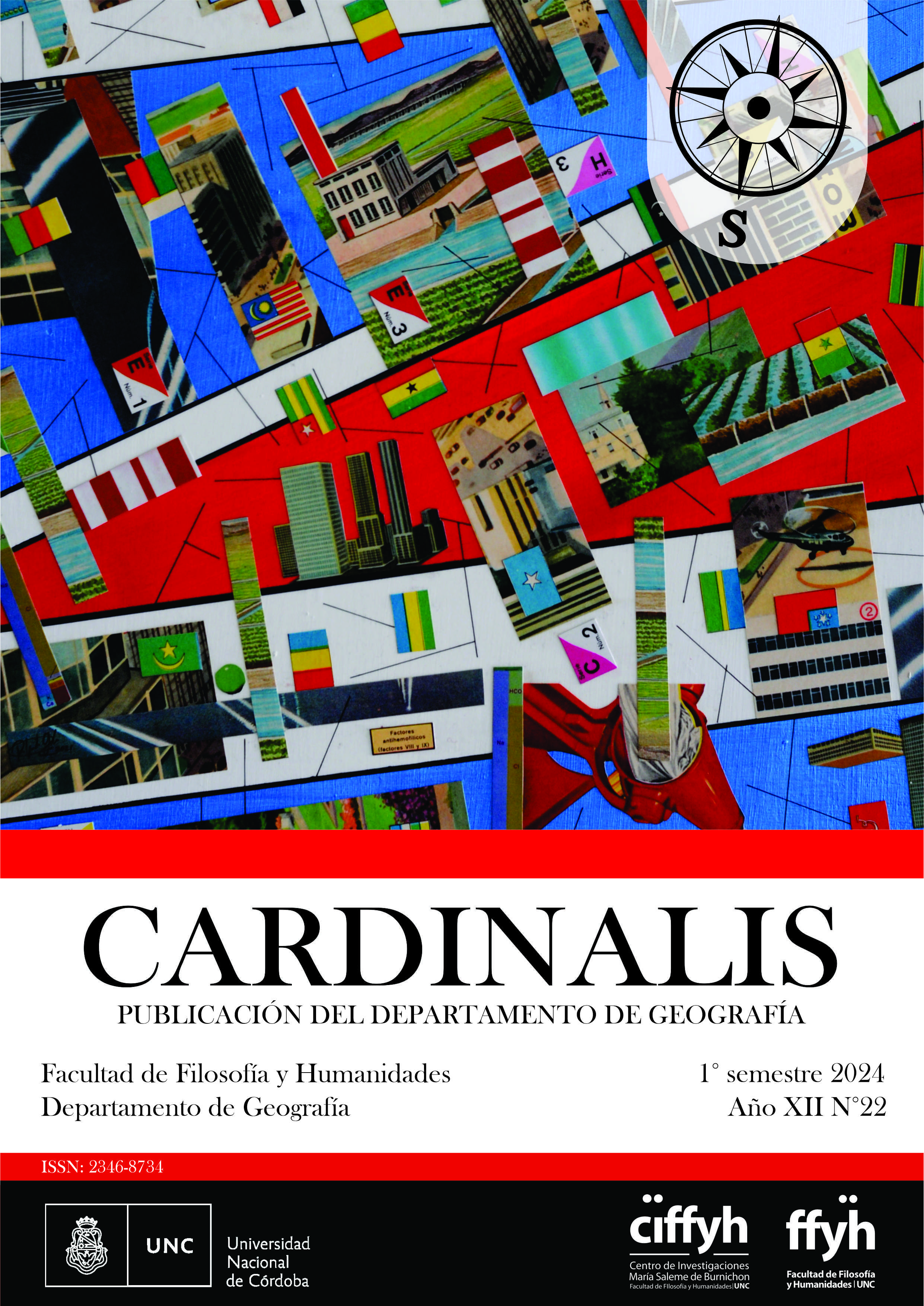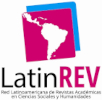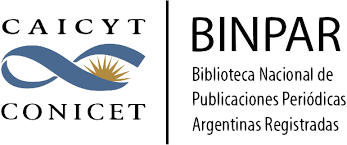The territorial configuration of the southern peri-urban area of the city of Santiago del Estero
Abstract
The city called Santiago del Estero is the most important urban, political, administrative, financial, and service provider center of the province. It underwent processes of transformation and expansion that affected its surroundings, generating a dynamic peri-urban
area. The main objective of this work is to characterize the southern peri-urban area of the city of Santiago del Estero, which presents itself with the diverse territorial transformations. The urban and rural geography, and the sociology contributed to the subject of this work. The locational-quantitative perspectives, perception, behavior and criticism allowed the development of a varied exploratory and descriptive methodology, with office and field work. The survey and preparation of a database, analysis and interpretation of statistical
information, satellite images, application of surveys, interviews, preparation of thematic maps, allowed the systematization and analysis of the information that led to differentiating areas, distinguishing the perception of inhabitants, and identify tensions. The lots, private neighborhoods, sports facilities, farms, residences of new inhabitants, cemeteries, among others, show the changes in land uses. There is also continued existence of rural homes, farms with crops and livestock, fallow or with natural vegetation. The expansive advance of the city has a greater presence in the immediate surroundings and following the circulation axes and local roads, determining a particular morphology. In this process, rural towns such as El Zanjón, Santa María, Vuelta de la Barranca are incorporated into the rhythms of the city. Inhabitants of this area see these changes as positive, social actors consider them appropriate and challenge them in various aspects. It is also presented as a space of tensions in socio-environmental issues. The objective and subjective is a contribution to the diagnosis and a tool for territorial planning.
Downloads
References
Bibliografía
Cuervo, LM (2006). Globalización y Territorio. Instituto Latinoamericano y del Caribe de Planificación
Económica y Social (ILPES), Área de Gestión del Desarrollo Local y Regional, CEPAL, Santiago de Chile.
Malizia, M., Boldrini Peralta, P., Bonardi, V., (2019). Desigualdad residencial en el aglomerado Gran Santiago
del Estero-La Banda (Noroeste Argentino), Editorial Consejo Nacional de Investigaciones Científicas y
Técnicas. Instituto Multidisciplinario de Historia y Ciencias Humanas. https://ri.conicet.gov.ar/handle/11336/118286
Molina, G. E., Arboit, M. E., Maglione, D. S., Sedevich, A. y Mutani, G. (Noviembre 2019 - Abril 2020).
Estudio de expansión urbana, crecimiento poblacional, consumos energéticos e índices de vegetación en el Área
Metropolitana de Mendoza. AREA, 26 (1), 1-2.
https://www.area.fadu.uba.ar/wpcontent/uploads/AREA2601/2601_molina_et-al.pdf
Ortiz de D’Arterio, P., Pérez V., Cardoso Magalhaes, A., (2009). Expansión periurbana y calidad de vida en el
Gran San Miguel de Tucumán, Instituto de Estudios Geográficos, Universidad Nacional de Tucumán, X Jornadas
Argentinas de Estudios de Población. Asociación de Estudios de Población de la Argentina, San Fernando del
Valle de Catamarca. https://www.aacademica.org/000-058/90.pdf
Romero, J (2010). Geografía urbana, Procesos, riesgos e incertidumbres en un mundo globalizado. Editorial Ariel S.A., Barcelona, España.
Santos, M (1995). De la totalidad al lugar. Editorial Oikos Tau, Barcelona.
Santos M (2000). La naturaleza del espacio. Técnica y tiempo. Razón y emoción. Editorial Ariel, Barcelona.
Zulaica, L.; Ferraro, R.; Vázquez, P. (2012). Transformaciones territoriales en el periurbano de Mar del Plata.
Facultad de Humanidades y Ciencias de la Educación de la Universidad Nacional de La Plata,
http://www.memoria.fahce.unlp.edu.ar/art_revistas/pr.5491/pr.5491.pdf
Downloads
Published
Issue
Section
License
Copyright (c) 2024 Caumo-Santillan-Favoretti-Gioria (Les Autor*s)

This work is licensed under a Creative Commons Attribution-NonCommercial-ShareAlike 4.0 International License.
Aquellos autores/as que tengan publicaciones con esta revista, aceptan los términos siguientes:- Los autores/as conservarán sus derechos de autor y garantizarán a la revista el derecho de primera publicación de su obra, el cuál estará simultáneamente sujeto a la Licencia de reconocimiento de Creative Commons (indicada abajo) que permite a terceros compartir la obra siempre que se indique su autor y su primera publicación esta revista.
- Los autores/as podrán adoptar otros acuerdos de licencia no exclusiva de distribución de la versión de la obra publicada (p. ej.: depositarla en un archivo telemático institucional o publicarla en un volumen monográfico) siempre que se indique la publicación inicial en esta revista.
- Se permite y recomienda a los autores/as difundir su obra a través de Internet (p. ej.: en archivos telemáticos institucionales o en su página web) antes y durante el proceso de envío, lo cual puede producir intercambios interesantes y aumentar las citas de la obra publicada. (Véase El efecto del acceso abierto).

Esta obra está bajo una Licencia Creative Commons Atribución-NoComercial-CompartirIgual 4.0 Internacional.






